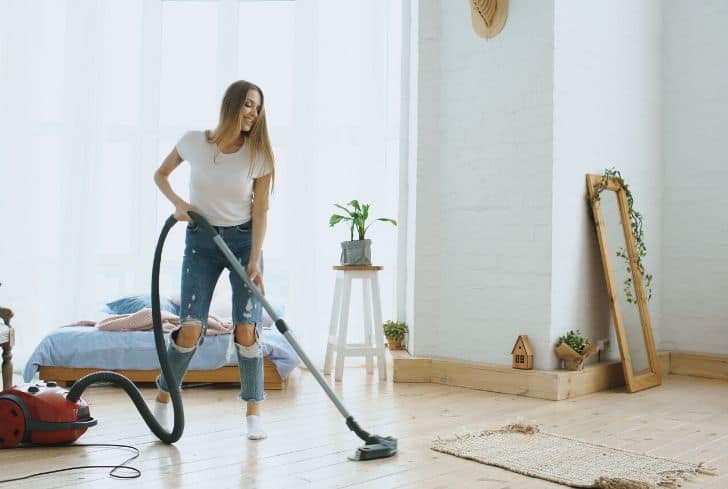Many people, when they think of air pollution, they think about smog and car emissions. This is what is called outdoor air pollution, but it is more dangerous when it becomes indoor air pollution.
Indoor air pollution occurs when certain air pollutants from particles and gases contaminate the air of indoor areas. These air pollutants can cause respiratory diseases or even cancer. Removing the air pollutants can improve the quality of your indoor air.
“Indoor air pollution refers to chemical, biological and physical contamination of indoor air. It may result in adverse health effects. In developing countries, the main source of indoor air pollution is biomass smoke which contains suspended particulate matter (5PM), nitrogen dioxide (NO2), sulphur dioxide (SO2), carbon monoxide (Ca), formaldehyde and polycyclic aromatic hydrocarbons (PAHs).”
Millions of people around the world prepare their meals using traditional methods (i.e., wood, charcoal, coal, dung, crop wastes) on open fires.
Such inefficient practices can increase the amount of air pollutants inside the home and can also cause serious health problems. According to WHO, 4.3 million people a year die from exposure to household air pollution.
This type of pollution is significantly more dangerous, considering how concentrated the air is in indoor environments. According to recent findings, over 2 million deaths occur every single year due to indoor air pollution. So what can we do about it? That is the question that many ask themselves every single day.
Before you can fully comprehend the effects of indoor air pollution, you must first be able to understand the causes of it as well as what we can do to improve our quality of air both indoors and outdoors.
Causes of Indoor Air Pollution
Toxic products, inadequate ventilation, high temperature and humidity are a few of the primary causes of indoor air pollution in our homes.
1. Asbestos is the leading cause of indoor air pollution. Asbestos can be found in various materials used commonly in the automotive industry as well as home construction. They are most commonly found in coatings, paints, building materials, ceiling and floor tiles.
You won’t find asbestos as often as you used because newer products do not contain asbestos. However, if you have an old home that was constructed a long time ago, the risks for asbestos are much greater than that of a newer home. Asbestos has been banned in the US and is no longer being used.
2. Formaldehyde is another leading cause of indoor air pollution. Formaldehyde is a colorless gas with a characteristic pungent smell. It is no longer produced in the United States due to its ban in 1970 but can still be found in paints, sealants, and wood floors. Carpets and upholstery use formaldehyde as a permanent adhesive.
3. Radon, which can be found underneath your home in various types of bedrock and other building materials, can also be a cause of indoor air pollution. Radon can get into the walls of your home and put both you and your family at risk.
4. Tobacco smoke that comes from outdoor and indoor areas can also be an indoor air pollutant.
5. Biological pollutants such as mildew, mold, bacteria, viruses, pollen, dust mites, animal dander, and many other contaminants can come into the home from outdoor areas. These contaminants that grow in damp environments can make you sick.
6. Wood stoves, space heaters, water heaters, fireplaces and dryers, the fuel-burning combustion appliances that you have in your home also cause indoor air pollution.
All these unvented or poorly vented fuel-burning appliances put out hazardous carbon monoxide as well as nitrogen dioxide. There are still billions of people who use these types of fuels to heat their homes on a daily basis.
7. Varnishes, paints, and certain cleaning household products can also emit pollution into the air that you breathe inside your home.
8. Synthetic fragrances, perfumes, air fresheners and deodorizers use substances that are largely unregulated and are not monitored by the government. The highly volatile and semi-volatile chemicals used in these products can cause indoor air pollution.
9. Fumes from paraffin wax candles used at home can cause indoor air pollution. As per the study done by South Carolina State University, the candles made of paraffin wax release toxic chemicals such as toluene and benzene that can quickly build up to an unhealthy level in enclosed areas.
10. Minute particles and gases from office machines and stationery such as copiers, laser printers, correction fluid, graphics and craft materials and others can release ultra-fine particles and VOCs that can penetrate deep into the lungs.
11. Dry cleaned clothes we bring in our house contain trichloroethylene and perchloroethylene, which are highly toxic substances.
12. Paint, lacquer, glue and plywood, etc. building and remodeling materials release volatile organic gases. Toxic volatile organic compounds can be emitted by building materials for as long as few years after installation.
13. Pesticides we use in and around the home to kill household pests include products to control insects (insecticides), termites (termiticides), rodents (rodenticides), fungi (fungicides), microbes (disinfectants) sold as sprays, liquids, sticks, powders, crystals, balls and foggers.
These are classed as semi-volatile organic compounds and include a variety of chemicals in various forms to cause indoor air pollution.
Serious Effects of Indoor Air Pollution
The effects of indoor air pollution can be life-threatening. Kids and old age people are more prone to the after-effects of indoor air pollution.
1. If Asbestos is found in your home, it can cause you very serious health problems such as lung cancer, asbestosis, mesothelioma, and various other types of cancers.
2. If contaminants such as animal dander, dust mites or other bacteria get into the home, there will also be some serious effects from them. You will start to experience asthma symptoms, throat irritation, flu, and other types of infectious diseases.
3. If lead is found in your home, it can also be severely life-threatening. It can cause brain and nerve damage, kidney failure, anemia, and a defective cardiovascular system.
4. Formaldehyde, one of the most common indoor air pollutants, can also cause health problems. You may experience irritation of the throat, eyes, and nose, as well as allergic reactions. It is classified as a known human carcinogen by the World Health Organization,and there have been several cases where it has also caused cancer.
5. Tobacco smoke causes individuals to experience severe respiratory irritation, pneumonia, bronchitis, emphysema, heart disease, as well as lung cancer.
6. Chemicals such as those that are used in certain cleaning agents and paints can cause you to experience a loss of coordination, liver, brain, and kidney damage, as well as many types of cancer.
7. The gas/wood stoves, heaters used in home produce hazardous nitrogen dioxide and carbon monoxide that can cause respiratory infections and damage and irritation to the lungs.
8. Radon found in the house is the second leading cause of lung cancer in America, according to the US National Cancer Institute.
9. The highly volatile and semi-volatile chemicals used in synthetic fragrances, perfumes and deodorizers found to be toxic and are capable of causing allergic reactions, skin irritation, central nervous system disorders, cancer, birth defects, and reproductive disorders.
10. Dry cleaned clothes containing highly toxic substances such as trichloroethylene and perchloroethylene are known to cause cancer.
11. Pesticides that we normally use in and around the home to kill household pests may result in health problems such as irritation to eye, nose and throat, damage to the central nervous system and kidney, increased risk of cancer.
Symptoms may include headache dizziness, muscular weakness, nausea. Chronic exposure to some pesticides can result in damage to the liver, kidneys, endocrine and nervous systems.
12 Easy Ways to Improve Indoor Air Quality
1. Smoking is one of the most common types of indoor air pollution. The best thing to do is to quit smoking and make your anti-smoking home zone.
The less the smoke emitted into the air, the less would be the chance of one of the listed effects happening to someone you love. Smoking is a leading cause of cancer. Lung cancer is the most common form of cancer caused by smoking.
2. Ventilate your indoor space, including the kitchen, attic and basement. Let fresh air circulate freely and frequently inside every corner of your house.
When too little outdoor air enters indoors, pollutants can accumulate to levels that can pose health and comfort problems.
3. Keep your environment clean. Keep your environment clean and free of allergens using a vacuum cleaner and wiping dusty surfaces with a damp cloth regularly. If you’re allergic to dust mites, washing of bed sheets, pillowcases and blankets weekly are also necessary to keep the allergen levels low.
4. Make sure you check the ingredients on any of your cleaning supplies to make sure they are environmentally friendly. Do your homework on what is considered to be a dangerous ingredient. You can also find an environmentally friendly cleaning list online, so you know exactly what to buy.
5. Have your home checked for asbestos? This is typically done before you move into the home. If you have a home that was built prior to the ban of asbestos, it is important to make sure there is none still lingering within the home.
6. Stop using gas stoves in your home as well as certain types of space heaters. They release harmful chemicals that could be dangerous to human health.
7. Have your home inspected for any mold, radon, or any other harmful chemical or bacteria that may be in your home. These types of inspections are traditionally done before you move in, so keep that in mind as well.
8. Use a good vacuum cleaner that has strong brushes and high-efficiency small particle filters to keep out chemicals and allergens accumulating in your home that significantly reduces interior particulate pollution and, subsequently, asthma and allergy symptoms.
Most commonly visited areas in your home must be cleaned several times thoroughly by using the vacuum.
9. Remember, most of the dirt in your home comes from shoes. Therefore, keep a large mat out of every room that will reduce the amount of dirt, and other pollutants from getting into your home.
10. Use an air purifier or air filter. The air contaminants and allergens may still be present in your living environment by wind, breeze, pets, humans and equipment despite taking the measures above.
Thus, the use of an air cleaner can be useful to reduce the levels of air pollutants in enclosed spaces. If possible, install an air filter in every room to improve air-cleaning efficiency.
11. When you’re refurbishing your home or office, replace toxin-releasing furniture or interior deco materials. It is tempting to buy cheaper products to save costs; however, think of the long-term costs that you may be paying ten years down the road.
12. Keep humidity under control. Excessive moisture in the air always encourages the growth of biological pollutants such as mold, mildew and fungus, in areas like basements and bathrooms that could trigger allergies.
Understanding the causes and effects of indoor air pollution will help you to understand why it should be prevented and what you can do to prevent it yourself. There are various online resources that can help you to discover the best options for you and your family.
Making small changes within the home can really make a huge difference. Having your home inspected on a regular basis can help you a lot to prevent any further damage to not only your home but you and your family as well.







